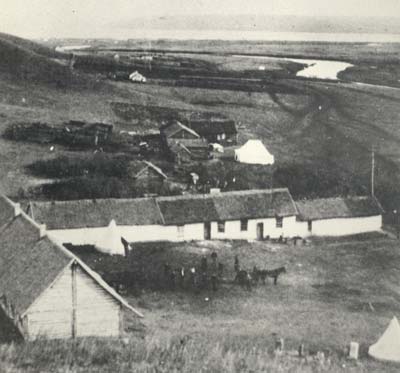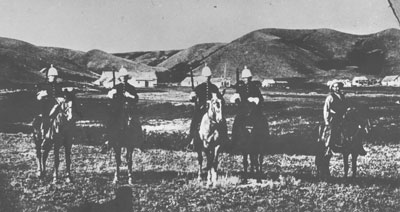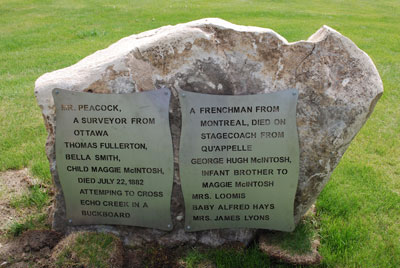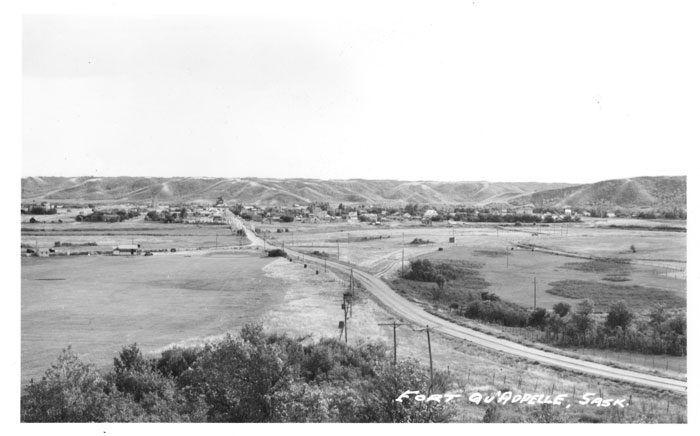

Historic Echo Ridge Golf Course
The North West Mounted Police established a small outpost in Fort Qu'Appelle on the site of the present golf course in 1876, in a small log cabin, with five men under sub-Inspector French. In 1879 the decision was made by Comm. James McLeod to enlarge the post. In July, 1880 "B" Division and headquarters under Sup't. Walsh and Inspector J. S. Steele were transferred to the post, and by the end of that year the post was manned by four sergeants, five corporals and twenty-seven constables under the command of a superintendent, an inspector and two staff sergeants. There was a strength of forty-six horses and two foals. All the lumber for the post was hauled by enlisted men from Swan River and the logs from some distance from the post. From this post the Mounted Police rode out on patrols along the trails to call on settlers and keep the peace over this vast territory.
After the defeat of General Custer at Little Big Horn Montana, in 1876, Chief Sitting Bull and his Sioux took refuge in Canada arriving at Wood Mountain in the spring of 1877. He parlayed with Assistant Commissioner Walsh to be recognized as Canadian Indians arguing their ancient allegiance to the Crown had never been broken. The Sioux were granted sanctuary but little else. The buffalo numbers were declining and there was enmity among the Indians of the area who resented the presence of such a large group of hunters in their hunting grounds which were rapidly being depleted of buffalo. During the winter of 1880-1881 many of the Sioux were starving and in early summer, 1881. Chief Sitting Bull and a band of his warriors came to Fort Qu'Appelle, where the Hudson Bay Post and Indian Department officials were situated, in the hope of obtaining supplies. The post had barely sufficient provisions for its own purposes, and the Indian agent was having problems feeding the Indians under his jurisdiction. Sitting Bull met with Inspector Steele and Commissioner Dewdney again making a strong plea for recognition as Canadian Indians and the granting of a Reserve for his Sioux. The government official refused the request, offering only a minimum amount of food to stave off starvation. Following a visit to the Roman Catholic Mission at Lebret, Sitting Bull returned to Wood Mountain and that summer in the company of Jean Louis Legare, the famous Wood Mountain free trader, he returned to the United States accepting the amnesty offered by the American government.
 In July, 1882, the headquarters of the NWMP was transferred from Fort Qu'Appelle to Regina. In 1955 a cairn was erected to mark the site where the NWMP barracks stood. In 1976 an interpretive shelter was officially opened at the same site. Two large plaques designed by the Museum of Natural History outline some of the history of the NWMP. Later a display kiosk detailing the Mounted Police history of the location was built near the club house.
In July, 1882, the headquarters of the NWMP was transferred from Fort Qu'Appelle to Regina. In 1955 a cairn was erected to mark the site where the NWMP barracks stood. In 1976 an interpretive shelter was officially opened at the same site. Two large plaques designed by the Museum of Natural History outline some of the history of the NWMP. Later a display kiosk detailing the Mounted Police history of the location was built near the club house.

Graves in the 3rd Hole Rough
Many years ago the Fort Qu'Appelle Historical Society passed a motion to commemorate the nine people buried in graves on the hillside that is now the rough of the 3rd hole at Echo Ridge golf course. Until this time, only the grave of Thomas Fullerton had been marked.
In 2010 the historical society, with assistance from Echo Ridge folks and many members of the community, placed a large rock with commemorative plaques on the site.
Buried there are:
- Mr. Peacock
- Thomas Fullerton
- Bella Smith
- Maggie McIntosh
- A Frenchman from Montreal
- George Hugh McIntosh
- Mrs. Loomis
- Alfred Hays
- Mrs. James Lyons
